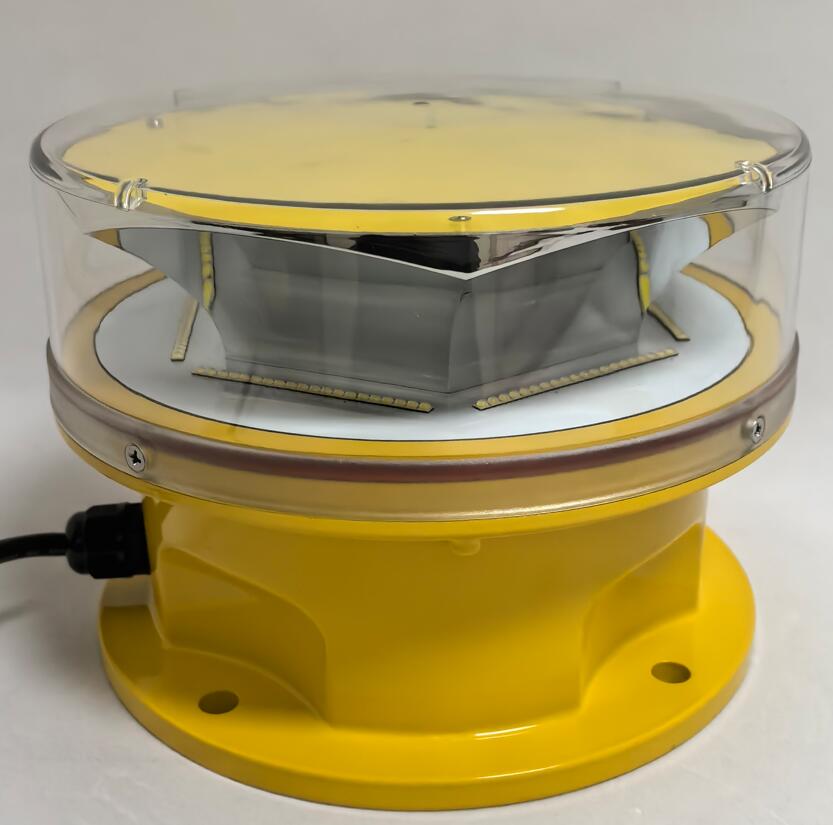As our urban landscapes reach ever higher into the skies, the need for effective aerial safety measures has never been greater. Aircraft warning lights serve as silent guardians of aviation safety, preventing collisions between aircraft and tall structures. These critical visual markers adorn skyscrapers, telecommunication towers, wind turbines, and other high-rise structures, ensuring safe navigation through increasingly crowded airspace. This article examines the technology, regulations, and evolving innovations surrounding aircraft warning lights.
The Critical Role of Aircraft Warning Lights
With global air traffic projected to double by 2040 and urban structures growing taller, aircraft warning lights perform several vital functions:
Collision Prevention: They provide visible markers for pilots, particularly during nighttime or adverse weather conditions.

Regulatory Compliance: Aviation authorities worldwide mandate their installation on structures above specific heights.
Navigation Aid: They help define safe flight corridors, especially near airports and in urban environments.
| air craft warning light |
Emergency Situations: Their distinctive patterns assist in search and rescue operations for downed aircraft.
Types of Aircraft Warning Lights
Different structures require specific lighting configurations based on height, location, and purpose:
1. Low-Intensity Warning Lights (Type A & B)
Application: Structures under 150 feet (45 meters)
Characteristics: Steady-burning red lights (L-810)
Common Use: Small towers, cranes, and suburban buildings
2. Medium-Intensity Warning Lights (Type C & D)
Application: Structures between 150-500 feet (45-150 meters)
| air craft warning lights |
Characteristics: Red or white flashing lights (L-864, L-865)
Common Use: Telecommunication towers, power line markers
3. High-Intensity Warning Lights (Type E & F)
Application: Structures exceeding 500 feet (150 meters)
Characteristics: Bright white strobes (L-856, L-857)
Common Use: Skyscrapers, broadcast towers, offshore platforms
4. Dual Lighting Systems
Combine red steady lights for nighttime with white strobes for daytime
Ensure visibility across all lighting conditions
International Standards and Regulations
Global aviation authorities maintain strict guidelines for aircraft warning light implementation:
FAA (Federal Aviation Administration): Mandates lighting for structures above 200 feet (61 meters) or near flight paths
ICAO (International Civil Aviation Organization): Sets international standards for light intensity and flash patterns
CAA (Civil Aviation Authorities): Local regulations may impose additional requirements
Light Synchronization: Multiple lights on a single structure must flash simultaneously
Maintenance Requirements: Regular inspections ensure continuous operation
Technological Advancements in Warning Light Systems
Modern aircraft warning lights incorporate cutting-edge innovations:
LED Technology
80% more energy efficient than traditional incandescent bulbs
Longer lifespan (50,000+ hours vs. 5,000 for incandescent)
Brighter output with lower power consumption
Solar-Powered Systems
Ideal for remote locations without grid access
Reduce carbon footprint and operational costs
Smart Monitoring Systems
Remote diagnostics and automatic failure alerts
Real-time performance tracking via IoT connectivity
Aircraft Detection Lighting Systems (ADLS)
Lights activate only when aircraft approach
Reduces light pollution in urban areas
Extends equipment lifespan
Challenges and Emerging Solutions
Despite their critical function, aircraft warning lights face several challenges:
Light Pollution Concerns
Solution: Directional lighting and ADLS technology
Benefit: Minimizes community impact while maintaining safety
Maintenance Accessibility
Solution: Drone-assisted inspections
Benefit: Reduces risks and costs for high-altitude maintenance
Wildlife Impact
Solution: Research into avian-friendly light wavelengths
Benefit: Protects migratory bird patterns
Energy Consumption
Solution: Advanced solar-LED hybrid systems
Benefit: Sustainable operation in all environments
Future Trends in Aircraft Warning Technology
The next generation of aircraft warning lights will likely feature:
AI-Powered Predictive Maintenance: Anticipate failures before they occur
Enhanced Visibility Systems: Improved performance in fog and heavy precipitation
Integrated Communication: Lights that transmit digital data to aircraft
Nanotechnology Coatings: Self-cleaning surfaces for reduced maintenance
Aircraft warning lights represent an unsung hero of modern aviation safety, quietly performing their vital function 24/7/365. As our cities grow taller and airspace becomes more congested, these luminous sentinels will continue to evolve through technological innovation. From energy-efficient LEDs to smart detection systems, the future of aircraft warning lights promises greater reliability, reduced environmental impact, and enhanced safety for all airspace users.
Their continued development remains crucial not just for aviation professionals, but for the billions of people who benefit from safe air travel and urban development worldwide. As we reach new heights in construction and transportation, aircraft warning lights will remain our constant guardians in the sky.